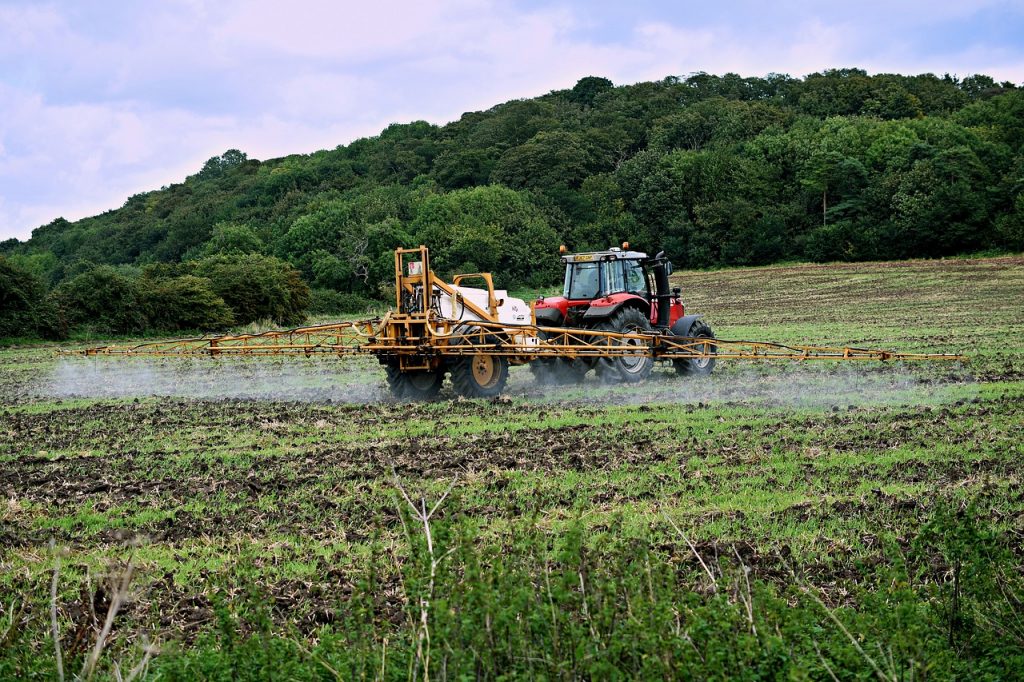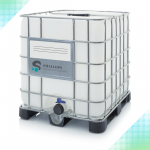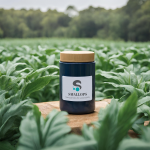¿Agriculture and nanotechnology?
Nanoscience in agriculture
Modern agriculture faces numerous challenges, from the need to increase food production to reducing environmental impact. In this blog, we will explain the various applications of nanotechnology in agriculture and how this technology can transform the way we grow our food.
Nano agriculture – agri nanotechnology
Nanotechnology, the science that manipulates matter at the nanometric level, has found numerous applications in various fields, and agriculture is no exception.
Nanoparticles and other nanoscale materials are being used to develop new tools and techniques that improve agricultural productivity, reduce environmental impact and promote more sustainable practices. In the dynamic world of modern agriculture, the search for innovative solutions is relentless, driven by the need to feed an ever-growing population in a sustainable and environmentally responsible manner. In this context, nanotechnology emerges as a transformative promise, offering a range of revolutionary applications that have the potential to change the agricultural landscape as we know it.
Applications of nanotechnology in agriculture, a revolution for modern agriculture
Nanofertilizers: More efficient plant nutrition for higher yields
Nanofertilizers are one of the most promising applications of nanotechnology in agriculture. Unlike conventional fertilizers, which are often applied in large quantities and can be inefficient, nanofertilizers offer a controlled and gradual release of nutrients, reducing losses through leaching and volatilization, and increasing plant uptake efficiency. This translates into less use of fertilizers, economic savings and a lower environmental impact, reducing the risk of soil and water contamination.
Benefits of nano fertilizer products
- Controlled Release: Nanofertilizers can release nutrients gradually, ensuring that plants receive a constant and balanced supply.
- Higher Absorption Efficiency: Nanoparticles are able to penetrate plant cells more effectively, improving nutrient absorption.
- Reduction of pollution: By using smaller amounts of fertilizer and improving its efficiency, nutrient runoff into water bodies is reduced, minimizing eutrophication.
- Higher Yield: Better nutrient absorption leads to higher crop growth and yield.
- Cost reduction: Less fertilizer use and higher absorption efficiency translate into economic savings for farmers.
Nanopesticides: More sustainable pest control for safer agriculture
Nanopesticides represent another crucial application area. These nanoscale pesticides can more precisely target pests and diseases, reducing the total amount of pesticide needed and therefore decreasing chemical residues on crops and the environment. The nanoparticles allow the pesticide to target the pest directly, minimizing the impact on the environment and protecting pollinators and other beneficial organisms.
Advantages and benefits of nanopesticides:
- Targeted Application and Greater Precision: Nanoparticles can be designed to specifically adhere to the surfaces of pests or pathogens, increasing the effectiveness of the pesticide.
- Lower Environmental Toxicity: By requiring lower doses, nanopesticides reduce the amount of chemicals released into the environment. Additionally, they protect the pesticide from environmental degradation, reducing its toxicity to the environment and non-target organisms.
- Extended Duration: Many nanopesticides offer slow release, which prolongs their effectiveness and reduces the need for frequent applications.
- Greater effectiveness: The controlled release of the pesticide ensures greater effectiveness in pest control.
- Pollinator protection: Nanoparticles minimize the impact of the pesticide on pollinators and other beneficial organisms.
Nanodevices and nanosensors for monitoring and diagnosis
Nanotechnology is also revolutionizing the monitoring and diagnosis of crop conditions. Nanosensors are tiny devices capable of detecting and measuring a wide range of parameters with exceptional precision and sensitivity. In agriculture, these sensors can be used to monitor the health status of crops in real time, providing vital information on nutrient availability, water stress, diseases and pests. This information allows farmers to make accurate and timely decisions to optimize the management of their crops, reducing losses and improving productivity.
Examples and advantages of applying nanosensors in agriculture
- Soil moisture monitoring: Allows farmers to optimize irrigation and avoid water stress in crops.
- Nutrient Detection: Helps determine the amount of fertilizer needed for each crop, avoiding excessive use and environmental pollution.
- Diagnosis of diseases: It allows diseases to be identified in their early stages, facilitating timely and effective treatment.
- Pest control: Helps detect the presence of pests in real time, allowing timely control measures to be taken and minimizing the use of pesticides.
- Physiological Status Monitoring: By measuring key physiological parameters, nanosensors help farmers make informed decisions about crop management.
Nanoencapsulation: Improving the efficiency of agrochemicals
Nanoencapsulation is a technique that envelops agrochemicals in a nanometric matrix, which can improve their stability, reduce their volatility, and control their release. This technology is especially useful for the application of herbicides and fungicides.
Advantages and Benefits of Nanoencapsulation
- Greater Stability: Encapsulation protects agrochemicals from degradation by environmental factors such as light and heat.
- Controlled Release: Allows a gradual release of the active ingredient, increasing its effectiveness and reducing the frequency of application.
- Lower Toxicity: By targeting agrochemicals more precisely, the impact on non-target organisms and the environment is minimized.
Nanostimulants: Promoting plant growth
Nanostimulants are nanoparticle-based compounds designed to improve plant growth and development. These products may include hormones, vitamins and other essential nutrients in nanometer form.
Impact and benefits of neurostimulants
- Increased Plant Growth: By improving nutrient absorption and stimulating key physiological processes, nanostimulants can accelerate plant growth.
- Stress Resistance: Some nanostimulants help plants better resist abiotic stress, such as drought or extreme temperatures.
- Improved Crop Quality: These products can improve crop quality, increasing yield and nutritional quality.
Nanomembranes: Nanomaterials for water treatment.
Safer and more sustainable irrigation water
Nanomembranes are membranes composed of nanoparticles that allow highly efficient water purification. In agriculture, nanomembranes can be used to treat irrigation water, removing contaminants such as salts, heavy metals and pathogens. This allows lower quality water to be used for irrigation, saving water resources and protecting the environment.
Benefits of using nanomembranes for irrigation water treatment:
- Improved water quality: Nanomembranes remove contaminants such as salts, heavy metals and pathogens, ensuring safe irrigation water for crops.
- Reduction in water use: Treating lower quality water allows less fresh water to be used for irrigation, conserving this vital resource.
- Environmental protection: Reducing the use of fresh water and eliminating contaminants helps protect the environment.
- Greater Productivity: Using high-quality irrigation water can lead to greater crop growth and yield.
Nanopackaging for food preservation: Reduction of waste and greater food safety
Los nanoempaques son envases elaborados con nanomateriales que ofrecen una mayor protección y durabilidad a los alimentos. Estos empaques permiten extender la vida útil de los productos agrícolas, reduciendo las pérdidas postcosecha y minimizando el desperdicio de alimentos. Además, los nanoempaques pueden incorporar propiedades antimicrobianas que ayudan a prevenir el crecimiento de bacterias y hongos, mejorando la seguridad alimentaria.
Nanopackaging is packaging made with nanomaterials that offer greater protection and durability to food. These packages extend the useful life of agricultural products, reducing post-harvest losses and minimizing food waste. Additionally, nanopackaging can incorporate antimicrobial properties that help prevent the growth of bacteria and fungi, improving food safety.
Advantages of nanopackaging for food preservation:
- Longer shelf life: Nanopackaging extends the shelf life of agricultural products, reducing post-harvest losses and food waste.
- Enhanced Protection: Nanopackaging offers greater protection against moisture, oxygen and light, preserving food quality and freshness.
- Antimicrobial properties: Some nanopackaging incorporate antimicrobial properties that help prevent the growth of bacteria and fungi, improving food safety.
- Sustainability: Nanopackaging can be biodegradable or recyclable, contributing to the sustainability of the agri-food sector.
Nanotechnology, a revolution for the agriculture of the future
Applications of nanotechnology in agriculture
Nanotechnology is transforming the agricultural landscape, offering innovative solutions to optimize production, reduce environmental impact and ensure food security. The applications of nanotechnology in agriculture are diverse and have the potential to revolutionize the way we produce and consume food.
Despite the challenges that still exist, such as the cost of production and the need for more research, nanotechnology is positioned as a key tool for the future of agriculture. As technology advances and costs decrease, nanotechnology has the potential to contribute to feeding a growing population in a sustainable and environmentally responsible manner.



